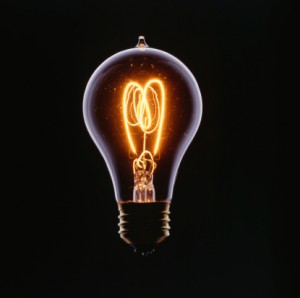
Imagine a dark room – it’s pitch black and you can’t see a thing. There are lots of people in the room, all bumping into each other and the various objects that are crowding the space. Everyone is getting frustrated – they can’t get things done, they feel annoyed by all the things that are “getting in their way”, they can’t see things clearly, and they drop things. Nothing seems to be working.
Then someone has the idea to form a committee to come up with a plan of how to deal with the obstacles in the room. “Let’s move them all over into this corner”. And then another group decides to write up a report to analyse the results. Then someone else decides we need an Inquiry to change things around because they don’t like the furniture over there and they’ve come up with a new idea – “let’s move it into the middle of the room”. And so another group forms to evaluate the results, write another White Paper and so on…
This came to mind the other day when I was listening to a story on the radio about yet another initiative by the latest political group who have set up a Government Inquiry to review a previous programme, written a report and are now dismantling it and creating a new programme.
It’s like rearranging the furniture in the dark. Trying to solve the problem at the level of the problem never moves us beyond the problem.
So what is the answer? How do we rise above the issues of the world and our lives? How do we get clarity about what is the right action in any given moment? How do we avoid getting trapped in the ever-repeating cycle of making the same old mistakes?
Let’s come back to the analogy of the dark room. What is needed? Rather than trying to bumble around in the dark, someone simply needs to transcend the problem and turn on the light. Immediately everyone can clearly see what is going on. What were once unresolved issues are now solved. What were once obstacles are now seen for what they are – useful and supportive pieces of furniture.
This mechanism is called the Principle of the Second Element – in order to solve an issue we need to transcend the issue and bring a new, second element to the situation.
This is what meditation does for us. Immediately we transcend. Relatively quickly, with regular practice, we remove the blockages of stress and tiredness and we stabilise the light of consciousness in our mind/body. Having stabilised that awareness we bring the second element of consciousness out into our lives. This is what it means to be enlightened.
Light = consciousness = awareness = perceptual capability.
When we are fully conscious, we can perceive clearly and accurately what is going on around us. Only then can we understand the reality of life. Without it, we continue to make mistakes and waste precious time by repeating the ever-known.
Thanks Jillian, I am just going through a challenging time in my marriage so seeing things clearly, without my own subconscious filters would certainly help!
I can see that it would help me to take things less personal and not make false interpretations..
Yes, sometimes the most simplest of solutions can sort a problem. A pause and it all becomes clear.
1shin noun ˈshin
from Middle English shine, from Old English scinu; akin to Old High German scina shin, Old English scīa shin, leg
First Known Use: before 12th century
Definition of SHIN
: the part of the human body used for finding furniture in the dark
THE ELEPHANT IN THE DARK, ON THE RECONCILIATION OF CONTRARIETIES
Some Hindus had brought an elephant for exhibition and placed it in a dark house. Crowds of people were going into that dark place to see the beat. Finding that ocular inspection was impossible, each visitor felt it with his palm in the darkness.
The palm of one fell on the trunk.
‘This creature is like a water-spout,’ he said.
The hand of another lighted on the elephant’s ear. To him the beat was evidently like a fan.
Another rubbed against its leg.
‘I found the elephant’s shape is like a pillar,’ he said.
Another laid his hand on its back.
‘Certainly this elephant was like a throne,’ he said.
The sensual eye is just like the palm of the hand. The palm has not the means of covering the whole of the best.
The eye of the Sea is one thing and the foam another. Let the foam go, and gaze with the eye of the Sea. Day and night foam-flecks are flung from the sea: of amazing! You behold the foam but not the Sea. We are like boats dashing together; our eyes are darkened, yet we are in clear water.
From Tales from Masnavi, Jalal al-Din Rumi
translated by A.J. Arberry